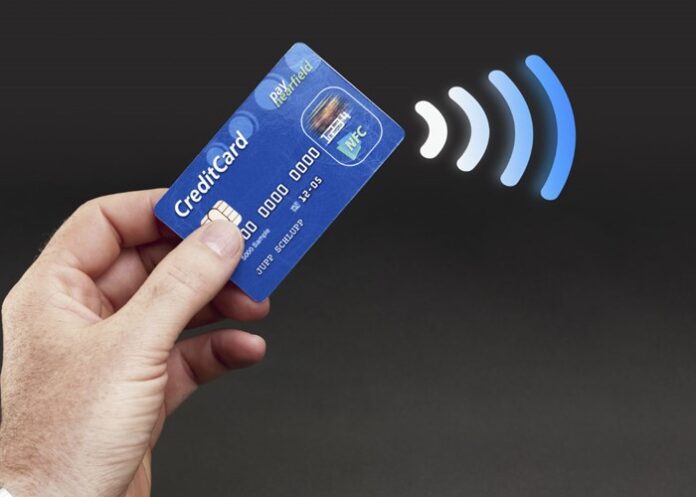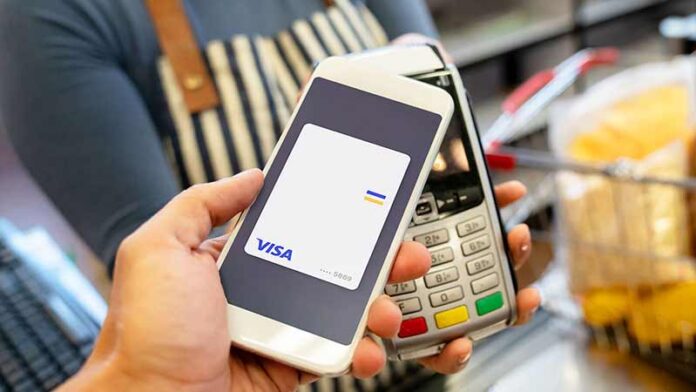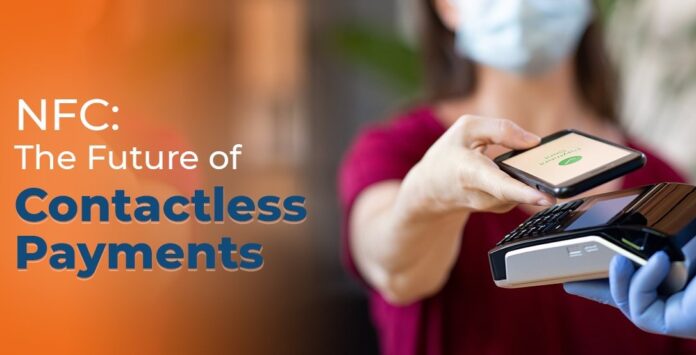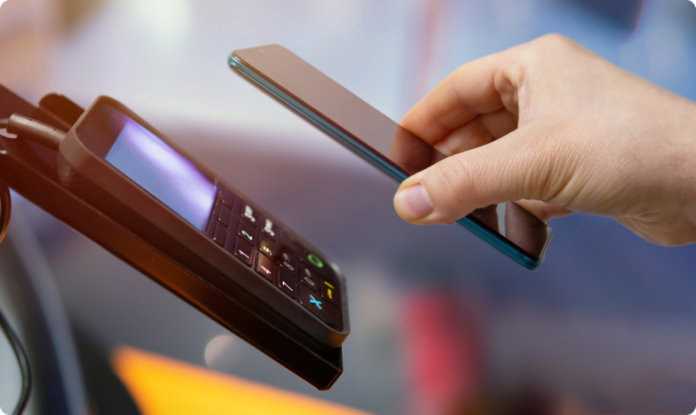Contactless payments involve using technology such as Near Field Communication (NFC) and Radio-Frequency Identification (RFID) to make transactions without physical contact. Post-COVID, their importance has surged due to hygiene and convenience factors.
Let us talk about what businesses should be aware of when it comes to this.
How Contactless Payments Work

Contactless payments utilize Near Field Communication (NFC) technology, which allows devices to communicate when they are in close proximity. NFC-enabled credit/debit cards and digital wallets like Apple Pay and Google Wallet facilitate these transactions.
The technology behind NFC enables data exchange between the payment device and the payment terminal through radio waves, which is secure and efficient.
The process begins when a customer taps their NFC-enabled device or card near a point-of-sale (POS) terminal, commonly known as a card machine for business. This action initiates the transaction by activating the NFC chip within the device or card.
The card machine for business, equipped with an NFC reader, sends an electromagnetic signal to the NFC chip, which then responds with the necessary payment information.
Once the payment processor confirms that the details are accurate and that the account has sufficient funds, it sends an approval message back to the card machine for business. The terminal then displays a confirmation of the transaction, and the purchase is completed.
The efficiency and simplicity of contactless payments, facilitated by NFC technology and modern card machines for businesses, have made them increasingly popular among consumers and merchants alike.
Advantages of Contactless Payments

Now let us talk about the advantages of this approach.
Convenience and Speed
Contactless payments are notably faster than traditional payment methods. Customers can complete transactions with a simple tap, reducing the time spent at checkout. This speed translates into shorter lines and quicker service, which enhances customer satisfaction. For businesses, faster transactions mean improved efficiency and the ability to serve more customers in less time.
Security Features
Security is a significant advantage of contactless payments. These transactions employ advanced security features such as tokenization and encryption. Tokenization replaces sensitive card information with a unique identifier, making it difficult for fraudsters to access the actual card details. Additionally, encryption ensures that the data transmitted during the transaction is secure. The reduced risk of card skimming and other types of fraud makes contactless payments a safer option for both consumers and businesses.
Hygienic Transactions
The COVID-19 pandemic highlighted the importance of minimizing physical contact. Contactless payments reduce the need for customers and staff to handle cash or touch POS terminals, which can harbor germs. This hygienic aspect has significant health benefits, particularly in preventing the spread of viruses and bacteria, making it a preferred payment method during and after the pandemic.
Adoption Trends and Statistics
The adoption of contactless payments has seen a significant increase during the pandemic. According to recent statistics, the global use of contactless payments grew exponentially as consumers sought safer payment methods. Market growth projections indicate that this trend will continue, with more businesses adopting contactless payment solutions. Case studies from the retail and hospitality industries show how these sectors have successfully integrated contactless payments, resulting in improved customer satisfaction and increased sales. For instance, restaurants that adopted contactless payments reported faster table turnover rates and enhanced customer experiences, highlighting the practical benefits of this technology.
Risks and Concerns
While contactless payments offer enhanced security, they are not without risks. Cardholder Verification Method (CVM) limits, which determine when a PIN or signature is required, can be a vulnerability. Additionally, there is potential for unauthorized access to personal information through RFID-based hacking, although this is relatively rare. Businesses must be aware of these risks and implement measures to mitigate them.
Data Privacy Concerns
The collection of user and transaction data raises privacy concerns. Consumers are increasingly aware of how their data is used and expect businesses to handle it responsibly. Addressing these concerns involves transparent data practices and ensuring that customers understand how their information is protected. Businesses must also comply with data protection regulations to avoid legal issues and maintain consumer trust.
Implementation for Businesses
To integrate contactless payments, businesses need to follow several steps. First, upgrading POS systems to support NFC technology is crucial. This might involve purchasing new hardware or updating existing systems. Training staff on the new procedures ensures smooth operation and helps address any customer questions. While there are costs associated with these upgrades, the potential savings and increased transaction volume can offset the initial investment. Additionally, businesses may find that contactless payments have lower processing fees compared to traditional methods. The improved customer satisfaction and efficiency can lead to higher sales and repeat business, making the transition to contactless payments a worthwhile investment.
Future of Contactless Payments

The future of contactless payments is promising, with emerging technologies poised to enhance the payment experience further. Wearables, such as smartwatches, are becoming more popular for contactless transactions. Biometric authentication, including fingerprint and facial recognition, adds an extra layer of security. Blockchain and cryptocurrencies are also being explored as potential payment methods, offering decentralized and secure transactions. These advancements are expected to impact developing markets significantly, where traditional banking infrastructure is limited. Long-term trends indicate that contactless payments will continue to evolve, driven by technological innovation and consumer demand for convenience and security.
The Bottom Line
Contactless payments offer numerous benefits, including convenience, speed, and enhanced security. However, businesses must also consider the associated risks and address data privacy concerns. Staying updated with payment technology trends is crucial for maintaining a competitive edge in the market. Adopting contactless payments can lead to improved customer satisfaction and operational efficiency, making it a valuable investment for businesses.






